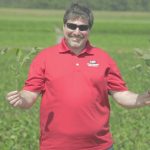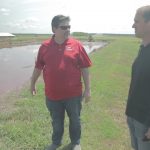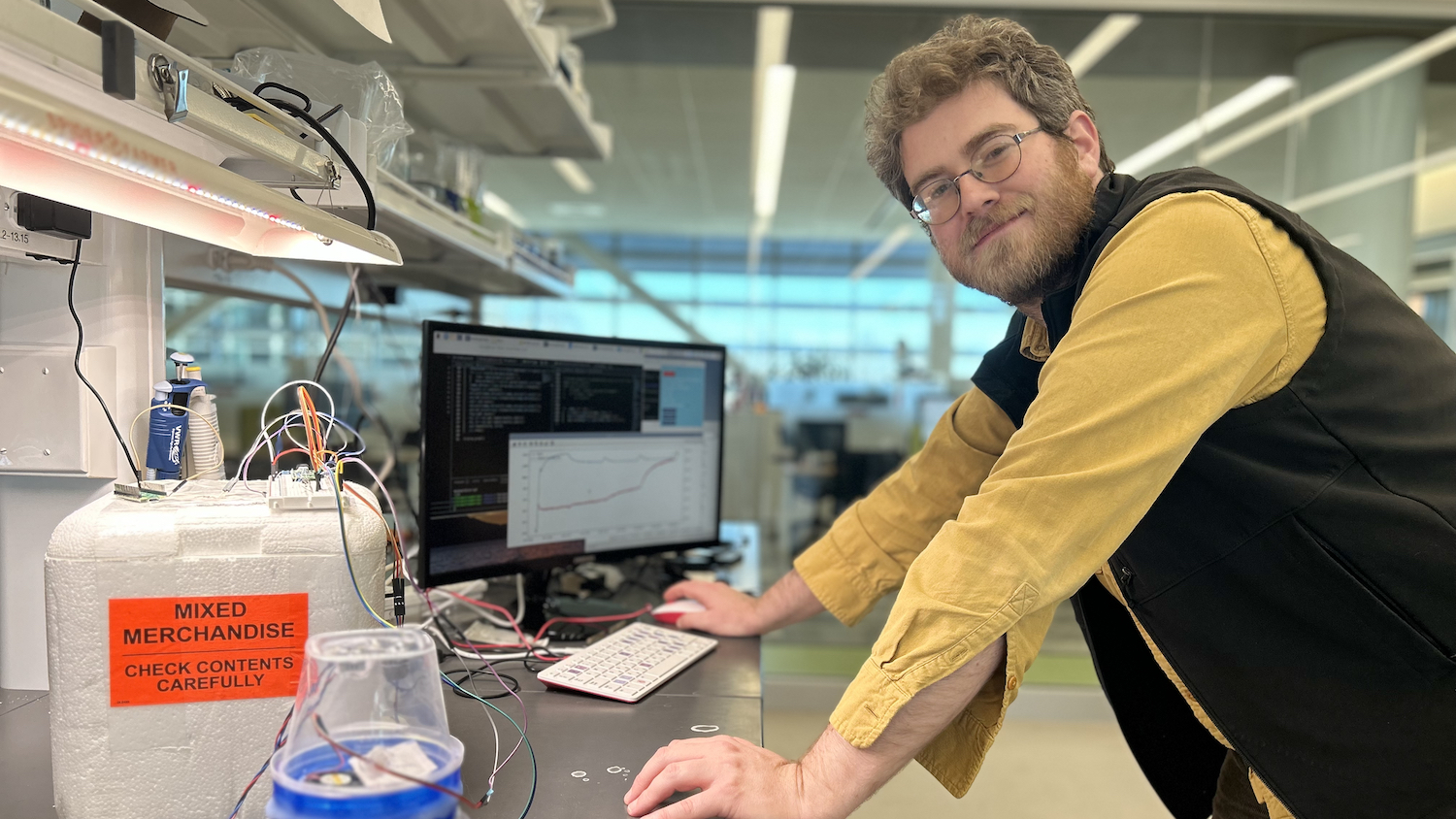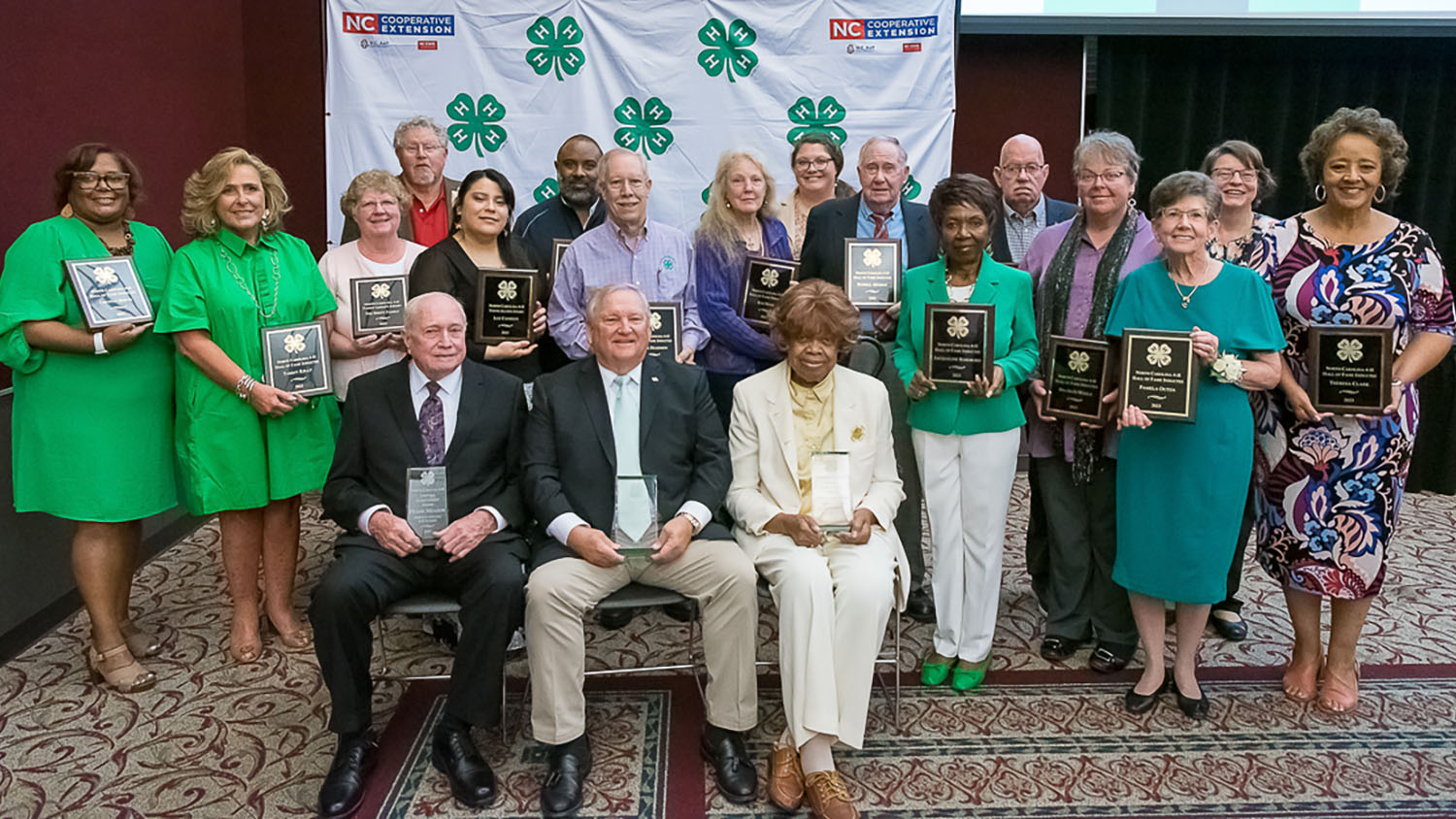STEPping Up Phosphorus Research
Long-term fertilization study gets major boost through new $25 million STEPS center
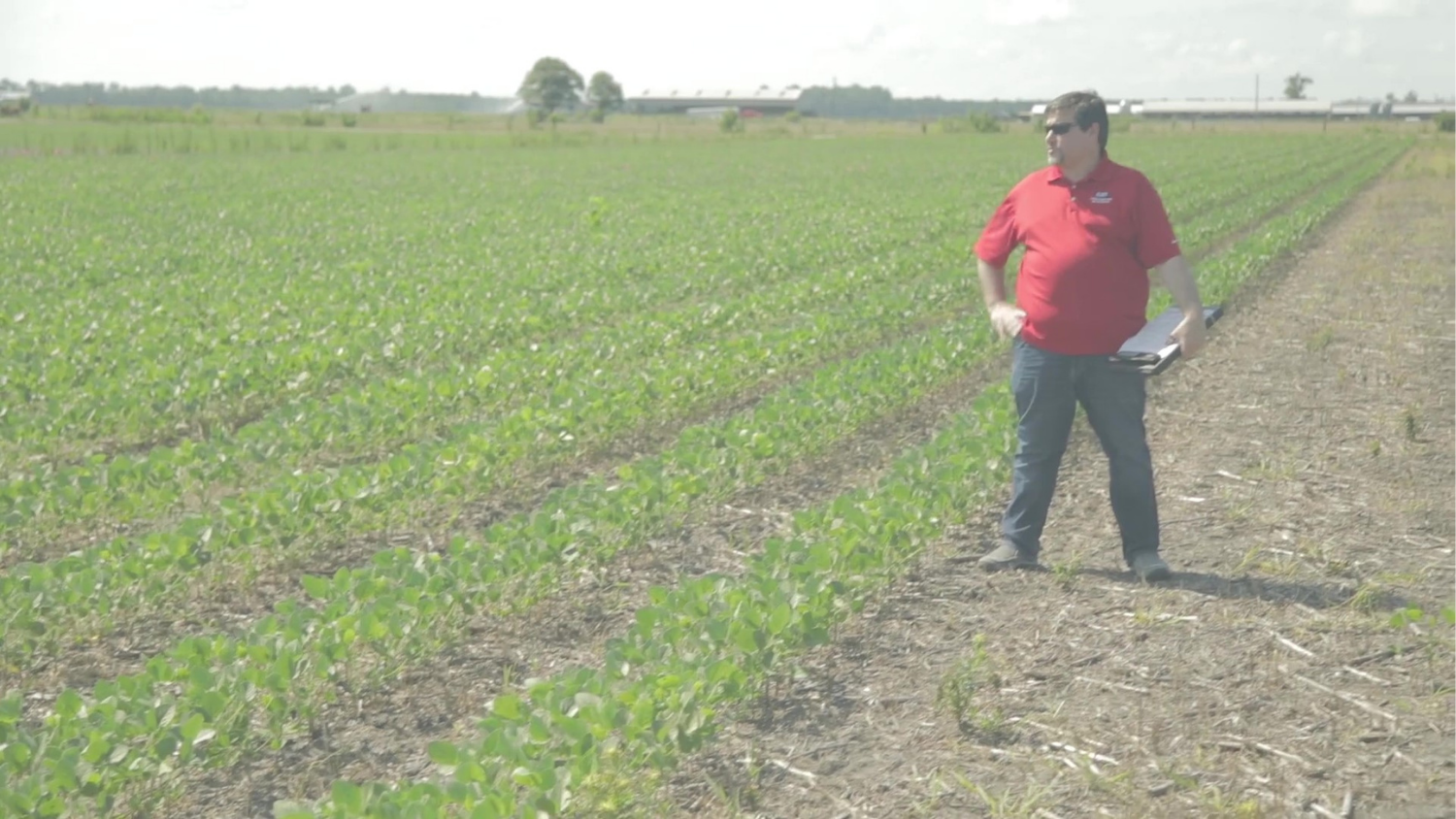
NC State Soil Fertility Specialist Luke Gatiboni recently took over one of the longest-running fertility research projects in America: a humble but important project that has guided North Carolina farmers’ fertilizer applications for nearly 60 years.
For most of those years, this longtime study used traditional research technologies and methods to define fertilizer recommendations for North Carolina crops. But as of last week, that work is set to be amplified at nearly every level.
Gatiboni and 23 other NC State researchers officially became part of a new research center that will foster the development of advanced technologies and use a large, interdisciplinary network of researchers to focus on one of the biggest issues facing agriculture and our global society today: phosphorus. Phosphorus is an essential nutrient for plants. And by some estimates, the world’s supply of mined phosphorus will tighten considerably in the next century, leading to eventual price increases for a resource depended on by most of the world’s farmers. In the meantime, phosphorus overuse today is creating dead zones in bodies of water throughout the world, as well as polluting the groundwater.
To help counter these phosphorus issues, the National Science Foundation (NSF) has launched a new Science and Technologies for Phosphorus Sustainability (STEPS) Center to be headquartered at the NC State University Plant Sciences Building, whose construction is scheduled to be completed in early 2022.
The new center will be a hub for advanced, interdisciplinary research that will ultimately minimize the environmental impacts of phosphorus while conserving our dwindling phosphorus supply by finding ways to develop more efficient fertilizers, engineer new plant varieties that need less phosphorus, and discover new ways to capture and recycle used phosphorus scattered throughout the world’s farmlands, waterways, and urban centers.
The $25 million center is supported by an initial five-year, renewable grant and will be led by two NC State faculty members: Jacob Jones, the STEPS center’s director and professor of materials science and engineering at NC State, and Ross Sozzani, professor of plant and microbial biology at NC State and the center’s co-deputy director.
“The fact that this Center integrates engineering with agriculture, life, physical, and social scientists, we can advance research while respecting the breadth of the phosphorus problem and system constraints,” Jones said.
A Collaboration of Two
In 2019, shortly after Gatiboni took over NC State’s 56-year soil fertility project, he was unexpectedly contacted by phosphorus researchers who were already part of the STEPS working group, before it became a center. They sought Gatiboni’s expertise for an agricultural study on the effects of phosphorus fertilization in soils and plants.
This conversation would lead to a strong collaboration right here at NC State, one that would take Gatiboni’s longtime project to a new level and help solidify NC State’s leading role in the STEPS center.
Gatiboni, a soils expert new to the university at the time, had the expertise and resources for his long-term study; but he needed a collaborator for the plant component of the study. Soon after, Gatiboni met Rubén Rellán Álvarez, an assistant professor of molecular and structural biochemistry at NC State who was studying how different corn varieties respond to phosphorus. The goal of the Rellán Álvarez study: identifying the molecular and genetic mechanisms that make some plant varieties more phosphorus efficient.
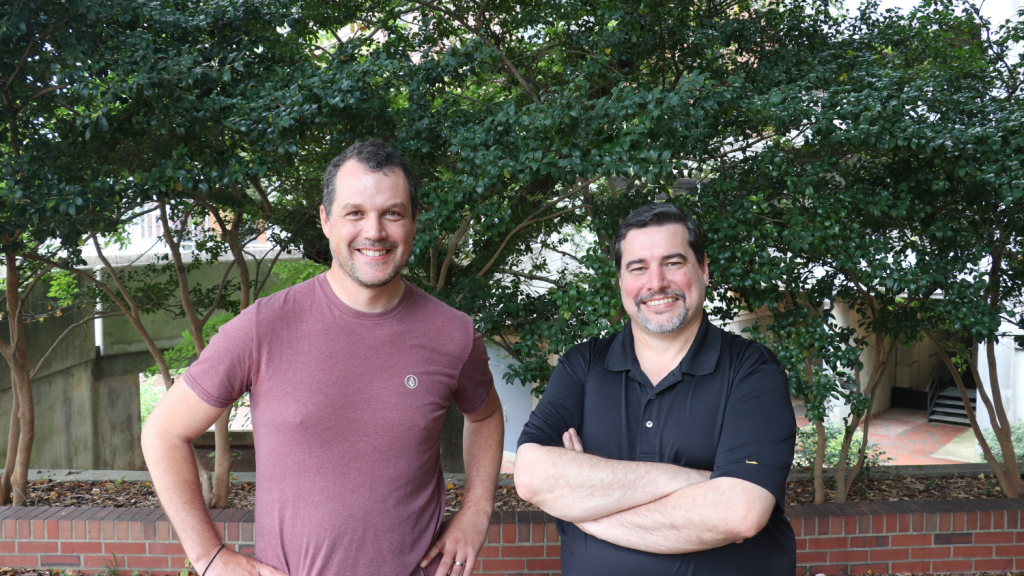
The two began to collaborate. Gatiboni shared his long-term research plots at the Tidewater Research Station in Plymouth, where he is studying the effects of fertilization on crop yields and phosphorus accumulation in soils, and Rellán Álvarez brought corn populations with different genetics and capabilities of phosphorus uptake.
For Rellán Álvarez, the collaboration would provide more data and understanding on how corn crops acquire and use phosphorus, as well as the genetic variations in corn varieties that govern these processes. The collaboration would also give Rellán Álvarez the opportunity to be part of a historic and significant study.
“Long-term field experiments provide tremendous insights into the dynamics of phosphorus fertilization of soils and provide a guideline on the actions we can take in the future,” said Rellán Álvarez. “It’s a beautiful example of data-driven research directly connected with farmers in North Carolina. We’re sitting on the shoulders of giants through this study.”
For Gatiboni, the partnership could help him to better understand the phosphorus dynamics in the soil-plant and develop enhanced strategies and methods for optimizing phosphorus fertilization in crops.
“Using this site together will be very beneficial,” said Gatiboni. “We’re now looking at more things at once. I was looking at one variety per year. Now Ruben is bringing in multiple – 500 to 700 – genetic varieties of corn. We can have more answers at the same time. It’s about leveraging the amount of data and the amount of knowledge that we can get.”
Growers in North Carolina will also benefit from Gatiboni and Rellán Álvarez’s collaboration, as well. In addition to enhanced fertilizer recommendations, their work could ultimately lead to new plant varieties that use phosphorus efficiently.
A Collaboration of Many
With the STEPS center now up and running, Gatiboni and Rellán Álvarez have become part of a much larger interdisciplinary research collaboration consisting of 40 senior investigators leading teams focused on specific areas of phosphorus research.
“It’s amazing how diverse this group is; everybody is working on the same problem from different perspectives,” said Gatiboni. “I am looking at soil and plant health and how to manage fertilization to make both sides sustainable. Ruben is looking at traits. Upstream from ag, we have people in the materials sciences looking at capturing phosphorus in urban waterways; we have experts in soil chemistry doing critical research on how phosphorus interacts with the soil and developing new phosphorus fertilizers; we have colleagues at Arizona State looking at capturing phosphorus from human urine; and we have people looking at how society is responding to the phosphorus problem. This is just some of the work.”
The STEPS center will also employ postdocs, Ph.D. and master’s-level students to work on different aspects of the research.
“STEPS puts us in touch with a phenomenal diversity of other scientists who are looking at other cool areas of opportunity,” Rellán Álvarez said. “When we combine all this work and these perspectives, we can get a much better idea about the phosphorus cycle. It doesn’t mean all scientists are going to do the work together, but we’re all going to share the results together. In that regard, it’s huge.”
Gatiboni, Rellán Álvarez, and other STEPS collaborators will also benefit from newly developed equipment. An engineering team in the STEPS network is developing new tools and technologies to advance phosphorus research, including sensors capable of detecting phosphorus levels in the soil, water, and plants – all in real time.
“If we can get this to work, we can directly see these phosphorus levels in the field as they change, which will allow us to manage these crops better,” said Gatiboni. “And if the real-time sensors do work out, devices that deliver phosphorus where and when it’s needed will soon follow.”
A group in the STEPS center will also be dedicated to education and outreach, helping to ensure that the solutions, technologies, and sustainable practices developed by Rellán Álvarez, Gatiboni, and other collaborators are applied to farms, urban centers, waterways, and other areas of importance for sustainable phosphorus management.
The NC State Advantage
The NC State University Plant Sciences Building—with more than 100,000 gross square feet of laboratory and greenhouse space, three Core labs with some of the world’s most advanced equipment, a high-speed network to support massive amounts of data generated by research, and staff supporting advanced research—was a natural fit for the STEPS Center’s headquarters.
Through the NC State Plant Sciences Building, Gatiboni and other researchers working in the STEPS center will have access to the new facility’s advanced growth chambers, greenhouses, and state-of-the-art equipment and its large, interdisciplinary team of experts.
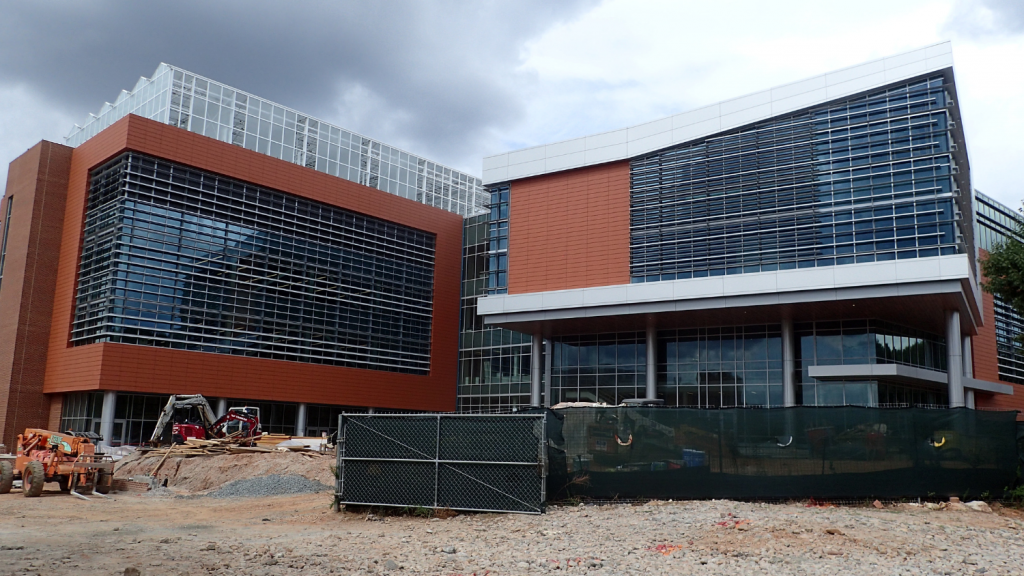
“We’ll use the facility a lot,” said Gatiboni. “In my case, we’ll be using the building’s advanced growth chambers and greenhouses for our smaller plant experiments. That’s in addition to our research plots at the Tidewater station.”
“I’m especially excited about using the new Genomic Science Lab (GSL) satellite facility, which will be located in the building,” said Rellán Álvarez. “Their new LGC Oktopure sequencing device can process hundreds of DNA tissue samples each day at full speed. That, along with GSL’s new OmeSeq genotype sequencing protocol, developed here at NC State, will make it easier to make associations with genomes and phosphorus-related traits we’re interested in.”
Gatiboni and Rellán Álvarez will also work closely with other NC State staff housed in the NC State Plant Sciences Building, including STEPS Co-deputy Director Ross Sozzani, to study how phosphorus use efficiency is controlled at the gene regulatory level.
Sozzani is also Plant Improvement Platform Director of the N.C. Plant Sciences Initiative (N.C. PSI), which brings together the top minds in academia, government and industry to drive vital research and innovation to solve the grandest issues in agriculture by increasing crop yields, creating new plant varieties, extending growing seasons, developing and improving technologies, and enhancing agricultural and environmental sustainability.
N.C. PSI can support the STEPS center through additional equipment in the Plant Sciences Building, its close connections with NC State’s 18 research stations across North Carolina, as well as potential new collaborators in academia, government, and industry.
“The N.C. PSI is fantastic at collaborations; they’re very well connected, and they’re headquartered in the NC State Plant Sciences Building, which makes them an extremely important resource for everyone working with the STEPS center,” said Gatiboni.

